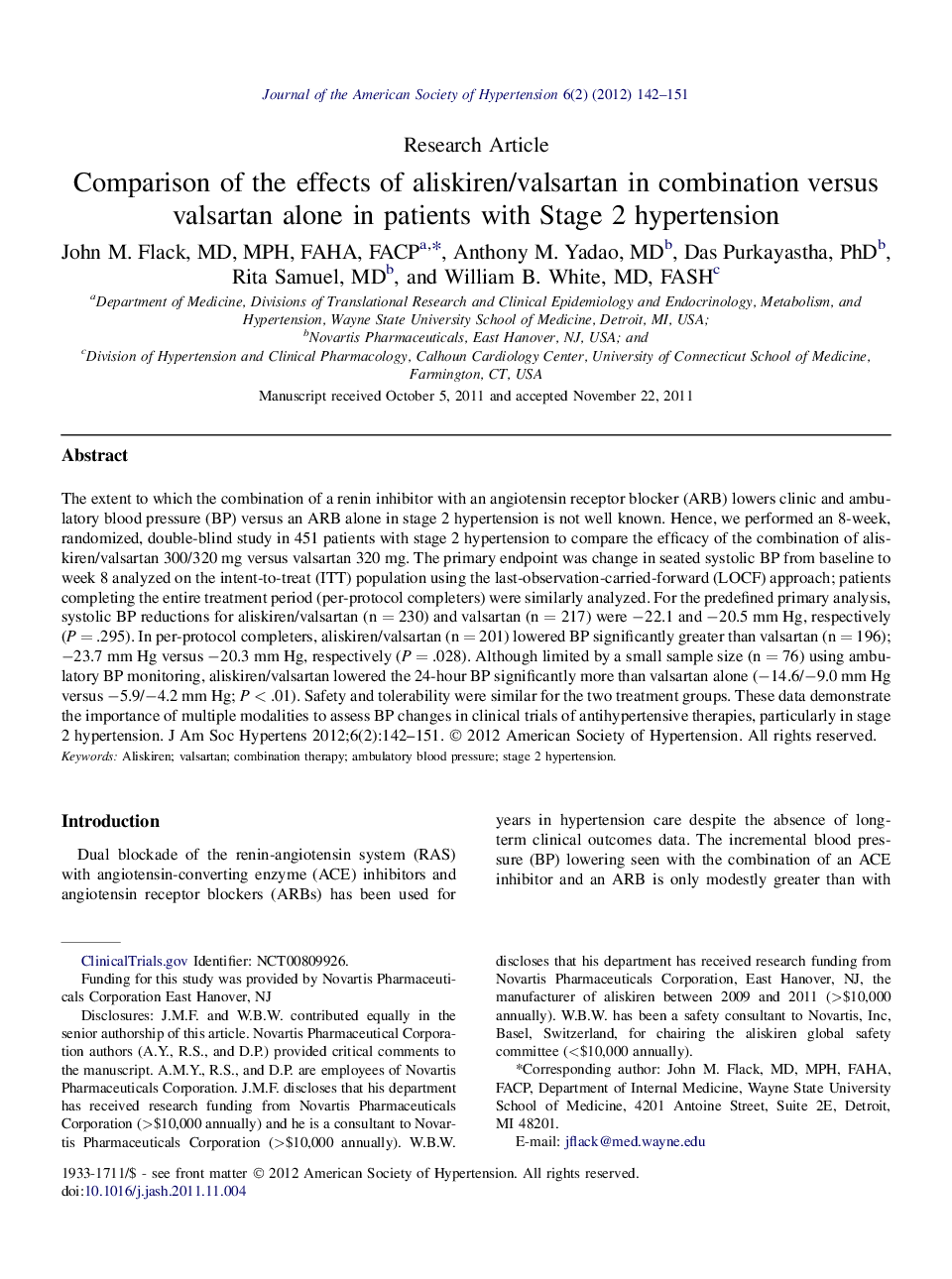| Article ID | Journal | Published Year | Pages | File Type |
|---|---|---|---|---|
| 2956964 | Journal of the American Society of Hypertension | 2012 | 10 Pages |
The extent to which the combination of a renin inhibitor with an angiotensin receptor blocker (ARB) lowers clinic and ambulatory blood pressure (BP) versus an ARB alone in stage 2 hypertension is not well known. Hence, we performed an 8-week, randomized, double-blind study in 451 patients with stage 2 hypertension to compare the efficacy of the combination of aliskiren/valsartan 300/320 mg versus valsartan 320 mg. The primary endpoint was change in seated systolic BP from baseline to week 8 analyzed on the intent-to-treat (ITT) population using the last-observation-carried-forward (LOCF) approach; patients completing the entire treatment period (per-protocol completers) were similarly analyzed. For the predefined primary analysis, systolic BP reductions for aliskiren/valsartan (n = 230) and valsartan (n = 217) were −22.1 and −20.5 mm Hg, respectively (P = .295). In per-protocol completers, aliskiren/valsartan (n = 201) lowered BP significantly greater than valsartan (n = 196); −23.7 mm Hg versus −20.3 mm Hg, respectively (P = .028). Although limited by a small sample size (n = 76) using ambulatory BP monitoring, aliskiren/valsartan lowered the 24-hour BP significantly more than valsartan alone (−14.6/−9.0 mm Hg versus −5.9/−4.2 mm Hg; P < .01). Safety and tolerability were similar for the two treatment groups. These data demonstrate the importance of multiple modalities to assess BP changes in clinical trials of antihypertensive therapies, particularly in stage 2 hypertension.
